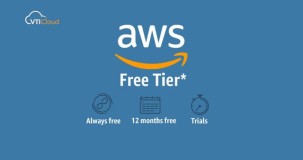How do I extract analytics from LinkedIn? To extract analytics from LinkedIn, you can follow these steps: 1. Log in to your LinkedIn account and go to your profile page. 2. Click on the "Me" icon in the top menu and select "Access My LinkedIn Data" from the dropdown menu. 3. On the "Download Your Data" page, click on the "Create Archive" button. 4. Select the data categories you want to include in your analytics, such as connections, posts, messages, etc. 5. Choose the date range for the data you wish to analyze. 6. Click on the "Request Archive" button to initiate the data extraction process. 7. LinkedIn will send you an email once your data is ready for download. 8. Follow the instructions in the email to download the archive file containing your analytics. By extracting analytics from LinkedIn, you can gain insights into various aspects of your professional network, including engagement rates, post performance, audience demographics, and more. This data can help you measure the success of your LinkedIn activities and make informed decisions to optimize your networking efforts.
One of the first steps in extracting analytics from LinkedIn is accessing the LinkedIn Page Analytics. This feature allows you to monitor the performance of your LinkedIn page, including its engagement, reach, and demographics of your followers. By analyzing this data, you can gain a better understanding of your page's performance and make data-driven decisions to optimize your content strategy.
LinkedIn Analytics also offers a comprehensive breakdown of your page's engagement metrics. This includes the number of impressions, clicks, likes, comments, and shares your posts receive. These metrics can help you gauge the effectiveness of your content and identify which types of posts resonate best with your LinkedIn audience.
Furthermore, LinkedIn provides insights on the demographics of your followers. This data includes information such as location, industry, job function, and seniority. Understanding your audience demographics is crucial for tailoring your content to their preferences and interests. For instance, if you notice a significant number of your followers are in the tech industry, you may want to create content that caters to their specific needs and challenges.
Another important feature of LinkedIn Analytics is the ability to track the performance of your LinkedIn articles. By accessing the Analytics section of your published articles, you can see how many views, likes, comments, and shares each article receives. This information can help you identify the topics and formats that generate the most engagement, allowing you to create more impactful content in the future.
In addition to LinkedIn's built-in analytics, you can also use third-party analytics tools to gain deeper insights into your LinkedIn performance. These tools provide advanced analytics and reporting, allowing you to measure key performance indicators (KPIs) such as click-through rates, conversions, and demographic insights.
Once you have extracted analytics from LinkedIn, it is essential to analyze and interpret the data effectively. Identify patterns, trends, and outliers within the data to gain valuable insights. For example, if you see a spike in engagement after sharing industry-related articles, you can deduce that your audience values these types of posts and adjust your content strategy accordingly.
A well-defined LinkedIn analytics strategy involves regularly tracking and evaluating your data to identify areas for improvement. Whether it's testing different types of content, analyzing the performance of specific campaigns, or monitoring changes in your audience demographics, regularly monitoring your LinkedIn analytics will enable you to make data-driven decisions that optimize your LinkedIn presence.
In conclusion, LinkedIn offers a wealth of analytics and insights to help individuals and businesses make informed decisions about their LinkedIn strategy. By utilizing these analytics, you can gain a deeper understanding of your audience, track the performance of your content, and optimize your LinkedIn presence to achieve your goals. Remember, it's not just about extracting analytics from LinkedIn; it's about using that data to drive measurable results.
LinkedIn provides users with various analytics to track their profile and content performance. These include insights about profile views, connection growth, post views, engagement metrics, and demographics of your audience.
2. How can I access analytics on LinkedIn?To access analytics on LinkedIn, you need to have a LinkedIn account and be the owner of the profile or page you want to analyze. Once logged in, navigate to your profile or page, click on the "Analytics" tab, and explore the available data and metrics.
3. Can I see analytics for my LinkedIn connections?No, LinkedIn does not provide specific analytics on individual connections. However, you can see the overall growth of your network and monitor the number of new connections gained over time.
4. Can I export LinkedIn analytics data?Yes, LinkedIn allows users to export analytics data for their profiles and pages. You can export data such as profile views, connection growth, post metrics, and more. Simply navigate to the analytics section of your profile or page, and look for the export option.
5. How can I use LinkedIn analytics to improve my presence?LinkedIn analytics can provide valuable insights into the performance of your profile or page. By analyzing the data, you can identify trends, understand what type of content resonates with your audience, and make informed decisions to optimize your presence on the platform.
 LATEST ARTICLES
LATEST ARTICLES

How do I donate a car in LA?

How do I get a promo code for WorldRemit?

How do I get a free AWS tier account?

How do I find the best keywords for SEO?

How do I get a domain name from Gmail?

How do I find out how many reward points I have everyday?

Are Spectrum and AT&T the same company?

Are CTEK battery chargers made in China?

Are Factor and Green Chef owned by the same company?
 POPULAR ARTICLES
POPULAR ARTICLES

How do I donate a car in LA?

How do I get a promo code for WorldRemit?

How do I get a free AWS tier account?

How do I find the best keywords for SEO?

How do I get a domain name from Gmail?

How do I find out how many reward points I have everyday?

Are Spectrum and AT&T the same company?

Are CTEK battery chargers made in China?

Are Factor and Green Chef owned by the same company?